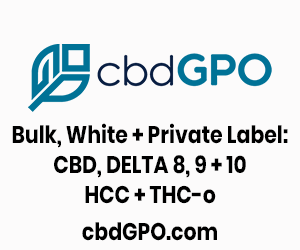What they’re saying: 7 issues hemp farmers are having with USDA’s production rules
FeaturedIndustrial Hemp NewsMarijuana Laws, Regulations, & Politics December 23, 2019 MJ Shareholders 0



(Part 1 of a two-part series looks at what hemp farmers have to say about the USDA’s interim final rule for federal hemp production. On Tuesday, we will examine comments submitted by ancillary businesses, industry associations and public figures.)
After publishing the interim final rule for federal hemp production on Oct. 31 – nearly 11 months after the passage of the 2018 Farm Bill made industrial hemp a federally legal crop to produce in the United States – the U.S. Department of Agriculture (USDA) is looking for feedback from industry members regarding the proposed rules.
In its open call for comments on federal hemp production regulations, the agency has so far received more than 1,200 responses.
Respondents ranged from small farmers to state agriculture departments and processors to industry associations.
Last week, the USDA agreed to extend the public comment period, originally slated to end Dec. 30, for an additional 30 days.
Comments submitted by Jan. 29, 2020, will be considered before a final rule is created, according to the agency.
Hemp Industry Daily reviewed the public comments to find out what hemp farmers were saying:
1. Total THC vs. delta-9
Dustin Coleman, Michigan
Eliminating the delta-9 test for CBD will destroy the entire hemp industry, as it is now, and will prevent farmers from taking the risk in the future. The 0.3% standard was based on delta-9 testing.
As a current hemp farmer, following all rules and regulations carefully, I feel this an intentional slap in the face of the small farmers who risked it all, just for our government to introduce rules that cannot possibly be followed. Delta-9 testing should be reinstated, or new legal levels should be determined based on the advised testing.
Jeremy Sauerssig, Minnesota
As a first-year hemp farmer and processor … I have quickly observed the THC levels around 1% when the CBD levels peak. This is the same for nearly all of the 12 varieties I grew.
The 0.3% limit is fine if you give 30-40 days to harvest afterward. The 15 days is fine if you raise the total THC limitations. Nowhere can I see the 0.3% and 15-day rules actually working for any geographical location.
2. THC testing
Susan Corbett, Virginia
Farmers cannot predict exactly how these different cultivars will react in different environments, in different soils, different climates.
Restricting its growth to 0.3% THC will severely hurt the market. We believe the limit should be 1% THC. This will allow farmers to produce high-quality CBD flowers, that will bring a decent profit, while maintaining a nonpsychoactive outcome.
No one is getting high on 1% THC, but that latitude will allow farmers to grow plants with 16% to 18% CBD, making this very stressful and labor-intensive crop worth the effort.
I believe enforcing these unrealistic limits will kill the CBD market because no farmer will risk it for such a small return.
3. 15-day sampling window and DEA labs
Elizabeth Meier, North Carolina
There is not enough manpower within the USDA, along with an overall lack of (Drug Enforcement Administration) DEA-registered testing sites that can accommodate the amount of tests that will need to be done; there is also no way this can be done in a timely fashion to allow a farmer to get the tests done on all varieties they are growing, receive test results and harvest the crop within a 15-day window.
Just like people, hemp doesn’t always react the same when put into different environments – it is important to trial and document how these varieties do, especially when there are multiple farms within a co-op or company.
Additionally, this window doesn’t even take into consideration acreage of land. It is much easier to harvest 1 acre of industrial hemp in comparison to 30 acres.
How can farms of different sizes all be treated the same and have the same expectations?
4. Unstable genetics
William Becker, West Virginia
The 15-day harvesting window that has been set is unreasonable for many farmers.
The weather is unpredictable, as well as the plants, for harvest in West Virginia. It took 20-30 days this past season because of the rain and amount of labor it takes to do it the right way.
I understand that another test could be done to allow for another 15 days, but this comes with a price.
The amount of regulations on hemp is becoming unrealistic when no one has grown this crop for generations. Until the genetics are more thoroughly established, I recommend the USDA loosen the regulations for this crop in order for American farmers to have greater success with this recently legalized agricultural product.
5. Testing and sampling
Kirt Kummer, Nevada
Please test the entire plant for THC and THC-A, not just the top few inches, where they are more concentrated. This will not only create a restrictive purchase market and be costly and prohibitive due to the restrictions.
Farmers will suffer the expense of purchase, cultivating, fertilization (and) planting expenses only to find out they don’t meet the new standards imposed by the USDA, opening the escalating market to more unscrupulous vendors and foreign markets.
6. Remediation and crop destruction
Kurt Beckley, Washington state
Forcing farmers to destroy their crops is a devastating consequence for this already-vulnerable demographic.
This is especially true given that there are no options to remediate the failed crop.
Furthermore, hot crops do not qualify for farm insurance, which means that the destruction of noncompliant hemp could force farmers into bankruptcy within a single year.
Because of hemp’s wide range of applications, there is no reason to force the destruction of hemp crops. Instead, farmers should be allowed to repurpose noncompliant crops into fiber, building materials, animal bedding and so on.
There should be a higher THC threshold (1%, for example) and measured solely by its delta-9 THC content instead of both real and potential THC.
Because THC-A is so volatile, using it to calculate potential THC is an unreliable measurement, anyway. Furthermore, unless grossly negligent, hemp farmers should not face federal prosecution should THC spikes occur.
Dennis Kulesza, Vermont
The USDA is redefining the 0.3% THC limit … This is not the limit we based our business model on. We based our business model on Total Theoretical THC of 1% or less with delta -9 THC being less than 0.3% as allowed under the Vermont hemp rules.
I would have to grow at least three times as many plants under the USDA rule to produce the same amount of CBD as I get out of one plant now. We have to be allowed to grow under a rule that allows us to go up to a Total Theoretical THC limit of 1% or less.
A reasonable and viable solution would be to allow certified testing laboratories to extract any THC-A from a crop when it is processed and turn it over to medical marijuana facilities such as hospitals and dispensaries.
Why destroy medicine? Why destroy jobs? Why destroy a tax base? Why destroy an industry? This does not have to be.
7. Profitability and global competition
Joel Brown, Oregon
Changing the post-harvest requirement from 0.3% delta-9 THC to 0.3% total THC is a huge mistake negatively effecting the production chain.
The farmer will have lower CBD percentage per acre because the only CBD hemp that will qualify will be 10%. The associated costs will rise through the entire production line, taking profits out of companies’ pockets and raising the cost for consumers.
I believe this will affect us on a global scale to compete if other countries allow high CBD seeds to be grown.
In summation
Russell Peterson, Michigan
I am extremely concerned with allowing the plant to mature and develop as a healthy cultivar. I have five things I would love to see considered:
- Extend the harvest time to 30 days to help with unforeseen delays and allow CBD to still be profitable for farmers.
- Require accreditation of a testing facility, and not through the DEA. This would be 17,025 standardization through a third party. This would ensure the integrity of the hemp market, as well as options for farmers to test in a timely manner.
- Increase the negligent threshold from 0.5% to 1% total THC in order to provide a safe environment for first-time and veteran farmers who would otherwise face criminal sanctions.
- Require state sampling to be 8-10 inches from the top, middle and bottom of the plant to be a representative sample of the plant.
- Allow for remediation processes of hemp testing under 1% total THC to go to processors that will ensure the product is compliant and can then flow into normal commerce channels regulated by the state.
These comments were edited for length and clarity.
Laura Drotleff can be reached at [email protected]
Subscribe to our Newsletter
MJ Shareholders
MJShareholders.com is the largest dedicated financial network and leading corporate communications firm serving the legal cannabis industry. Our network aims to connect public marijuana companies with these focused cannabis audiences across the US and Canada that are critical for growth: Short and long term cannabis investors Active funding sources Mainstream media Business leaders Cannabis consumers











No comments so far.
Be first to leave comment below.